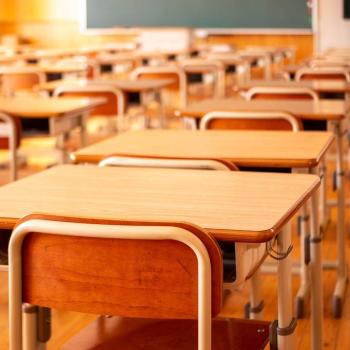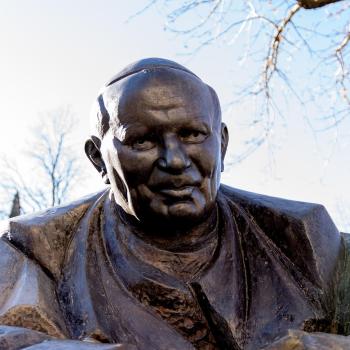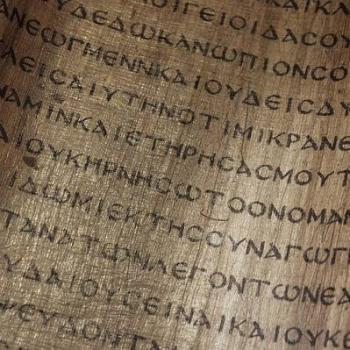THE QUESTION:
What are the do’s and don’ts on religion in U.S. public schools?
THE RELIGION GUY’S ANSWER:
As U.S. public schools cope with in-person learning in the midst of another COVID-19 upsurge and argue about “critical race theory,” let’s remember some good news. Divisive past disputes about how schools handle religion have been substantially settled. Debates continue on certain church-and-state issues but most deal with religious schools and taxpayer funding, not public education.
There’s widespread agreement on what federal court rulings require, and on what common sense commends in light of today’s pluralistic student bodies. A remarkably broad alliance of groups has joined in a series of policy statements brokered by Senior Fellow Charles Haynes at the First Amendment Center. You can read the full texts for yourself or print them out here: www.religiousfreedomcenter.org/resources/consensus.
The lists of those endorsing the policies vary somewhat but typically they involve all the relevant public school associations alongside major “mainline” and “evangelical” Protestant organizations; Reform, Orthodox and “communal” Jewish groups; religious liberty advocates; and the Council on Islamic Education. Though most lack official backing from the U.S. Catholic bishops’ conference, no conflicts with church thinking have been raised.
Especially significant is “A Teacher’s Guide to Religion in Public Schools,” issued in 2004. Others are “A Parent’s Guide to Religion in the Public Schools,” “The Equal Access Act: Questions and Answers,” “Religion in the Public School Curriculum: Questions and Answers,” “Religious Holidays in the Public Schools: Questions and Answers,” “The Bible and Public Schools: A First Amendment Guide,” and “Public Schools and Religious Communities: A First Amendment Guide.”
The overriding agreed principle: “The First Amendment prohibits public-school teachers from either inculcating or inhibiting religion Teachers must remain neutral concerning religion, neutral among religions, and neutral between religion and non-religion.” Thus schools are neither “religion-free zones” nor platforms for worship or evangelism. Religion should be part of a well-rounded education, but presented in an academic, non-partisan manner. Then this: the rights accorded to secular groups and individuals apply equally to religious believers.
Here are summaries on some key topics.
Teaching about religion — The U.S. Supreme Court outlawed schools’ devotional or ceremonial prayers and Bible readings in 1962 and 1963 and more recently banned public prayers at graduations or football games. But the Court has also stated that “it might well be said that one’s education is not complete” without learning about religions, and “certainly” the Bible is “worthy of study for its literary and historic qualities.”
The agreed statements distinguish between objective academic teaching about religions with well-trained teachers versus religious “indoctrination,” promotion or practice. Guest speakers from a religious group are allowed but should follow that approach and have a broad academic background. Balanced curriculum materials are available, for instance “The Bible and Its Influence,” (second revised edition, 2011) with its interfaith development and acceptance. See https://www.bibleliteracy.org/the-textbooks. Religious groups are permitted to arrange “released time” classes during the school day that teach their beliefs, but only in off-campus venues.
Religious holidays — Schools can recognize and teach about but not “celebrate” them. Music, art, drama, and literature with religious themes at holiday times or otherwise may be studied for academic value but “not as a vehicle for promoting religious belief.” Concerts should not be “dominated by religious music,” especially when they coincide with a holiday.
Teachers’ personal beliefs — Teachers and coaches should not pray with students or with students present during the school day nor use their position to promote non-school religious activities. But they are free to privately pray or study scriptures on campus during free time without students present, and to serve as teachers within their own religious communities. “Non-obtrusive” religious jewelry is fine but not e.g. t-shirts with evangelistic messages. If students ask about a teacher’s beliefs, answer honestly but briefly.
Students’ personal beliefs — They may express their beliefs to others or hand out religious materials so long as this is not “disruptive,” on the same basis as students with other ideas. On campus they may quietly read scriptures, pray before meals or tests, and express beliefs in class or in assignments when this fits “ordinary academic standards.” The “equal access” principle means after-school or lunch-hour religious clubs are allowable just like secular clubs so long as students initiate and lead them, not teachers or outsiders. Religious clubs can publicize meetings via school channels the same as other groups do.
Excusal from class on religious grounds — Schools should accommodate such requests from parents “whenever possible.” The operating principle is that public schools cannot “substantially burden a student’s free exercise of religion.” (A particularly delicate situation is when parents who do not believe in the theory of biological evolution do not want their children to learn about it despite state science curriculum requirements.)
There are also special cases. For instance, educators should be aware that Jehovah’s Witness youths cannot recite the Pledge of Allegiance or celebrate birthdays. Students who practice Islam are a particularly complex matter and believers make the following requests.
Mandatory daily prayer times occur during the school day so students need a private space for this and permission to leave class as needed, and the same for Friday midday worship attendance at mosques. Some branches of Islam cannot set the date for major festivals in advance on calendars, so schools should be flexible with Muslim students’ tests, assignments and absences. Cafeterias should offer options to pork and mark items that contain pork by-products, as they would for observant Jews.
Consultation with parents and class opt-outs may be needed regarding concerns over coed gym classes, clothing rules, and required sex education. Teachers should be aware that handshakes or comforting touches with a student of the opposite sex may not be acceptable, and that out of modesty girls might not look adult males directly in the eye. And of course classroom presentations about Islam should be fair. For further detail, see this Muslim guide for educators: www.cair.com/wp-content/uploads/2020/02/An-Educators-Guide-to-Islamic-Religious-Practices.pdf.












